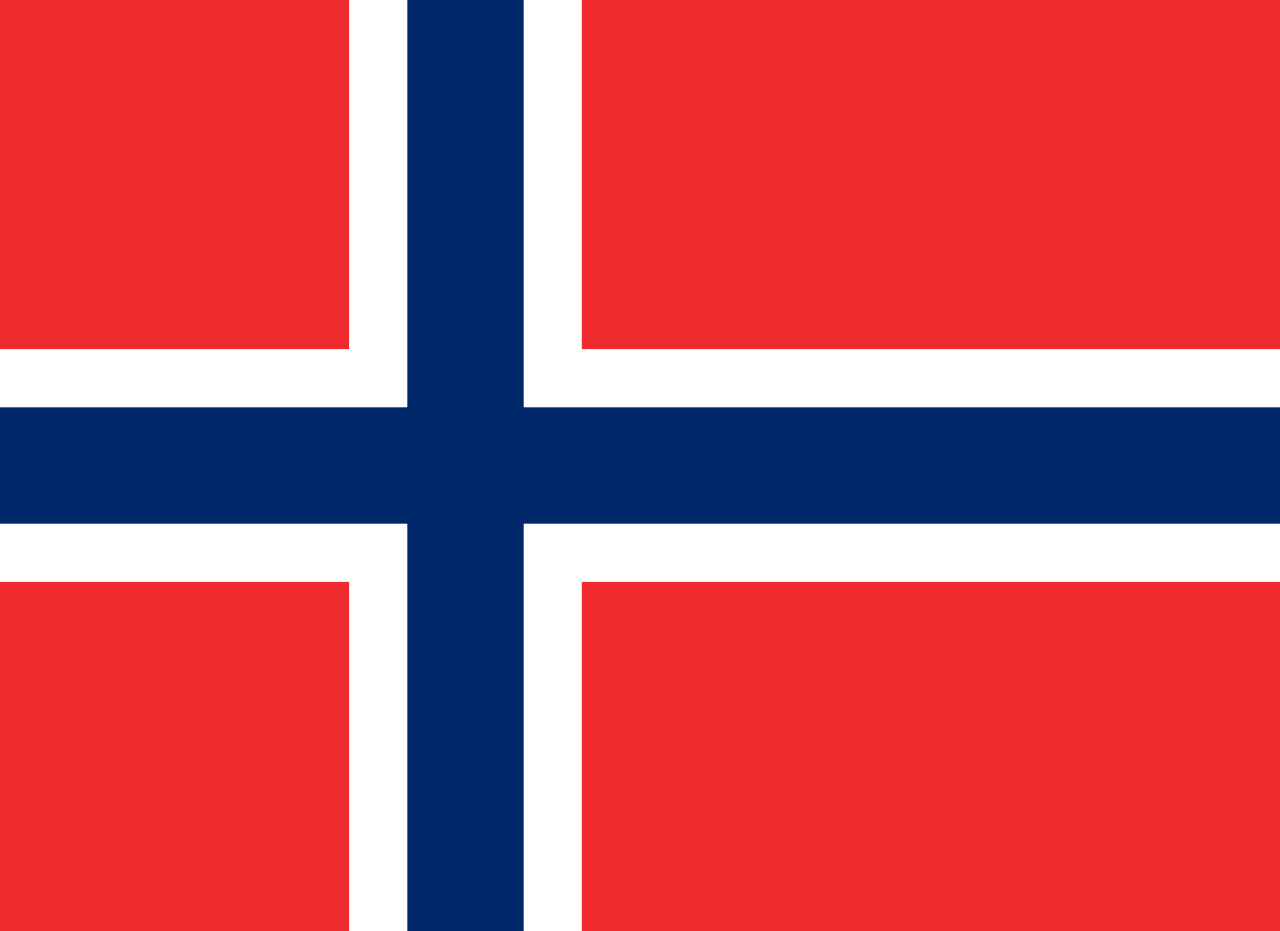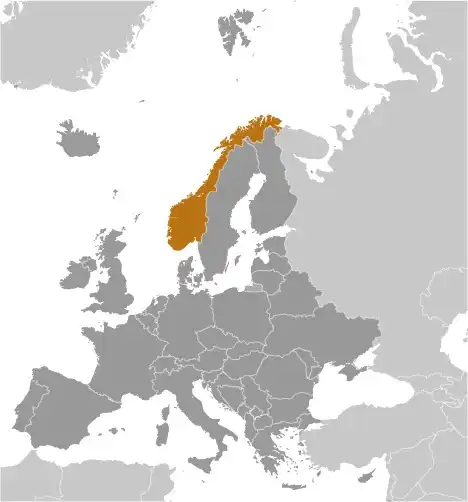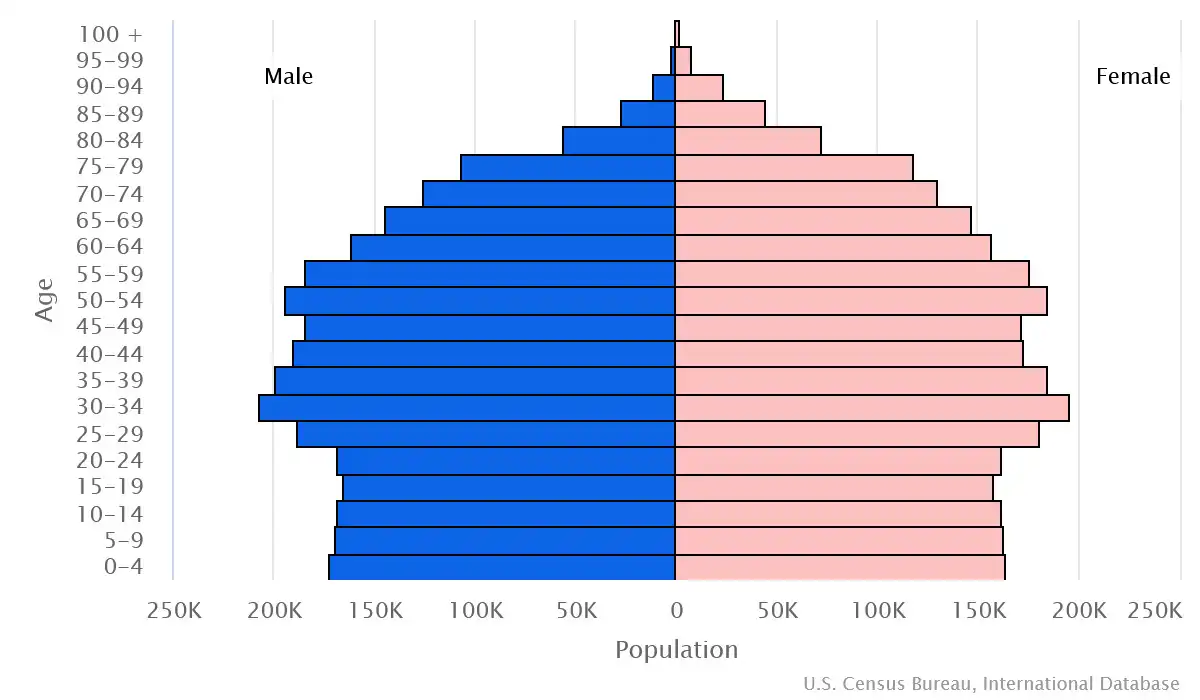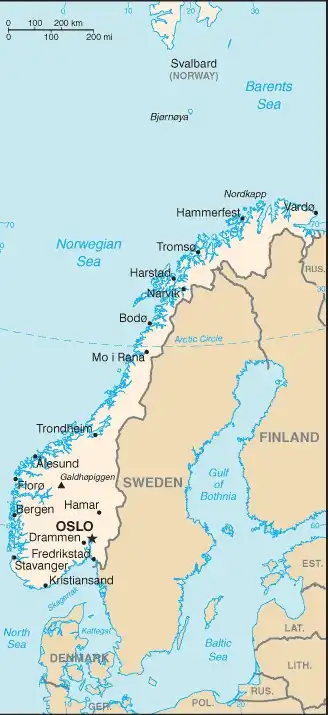
Norway Country Profile
Key Facts of Norway

| Government type: | parliamentary constitutional monarchy |
| Capital: | Oslo |
| Languages: | Bokmal Norwegian (official), Nynorsk Norwegian (official), small Sami- and Finnish-speaking minorities |
Norway Demographic Data
Ethnic Groups in Norway(2021 est.)
Religious Groups in Norway (2021 est.)
Age pyramid of Norway

Norway Economy Statistics
Economic overview of Norway
high-income, non-EU economy with trade links via European Economic Area (EEA); key European energy security role as leader in oil, gas, and electricity exports; major fishing, forestry, and extraction industries; oil sovereign fund supports generous welfare system; low unemployment; inflation and response hampering growth in non-energy sectors
Norway Real GDP (purchasing power parity) in Billion $
Norway Real GDP per capita in $
Norway's Exports & Imports in billion $
Top 5 Import Partnerin 2022 (51%) of Norway
Top 5 Import Commodities in 2022 of Norway
- cars 🚗
- refined petroleum ⛽
- ships 🚢
- garments 👕
- nickel 🪙
Top 5 Export Partnerin 2022 (70%) of Norway
Top 5 Export Commodities in 2022 of Norway
- natural gas 💨
- crude petroleum 🛢️
- fish 🐟
- refined petroleum ⛽
- aluminum 🪙
Geography of Norway
Map of Norway

Land and Water Distrubtion of Norway
Natural Resources of Norway
- petroleum 🛢️
- natural gas 💨
- iron ore ⛓️
- copper 🟧🪙
- lead 🪙
- zinc 🔩
- titanium 🪙
- pyrites 🪙
- nickel 🪙
- fish 🐟
- timber 🌲
- hydropower 💧⚡
Climate inNorway
temperate along coast, modified by North Atlantic Current; colder interior with increased precipitation and colder summers; rainy year-round on west coast
History of Norway - a Summary
Two centuries of Viking raids into Europe tapered off after King Olav TRYGGVASON adopted Christianity in 994; conversion of the Norwegian kingdom occurred over the next several decades. In 1397, Norway was absorbed into a union with Denmark that lasted more than four centuries. In 1814, Norwegians resisted the cession of their country to Sweden and adopted a new constitution. Sweden then invaded Norway but agreed to let Norway keep its constitution in return for accepting the union under a Swedish king. Rising nationalism throughout the 19th century led to a 1905 referendum granting Norway independence. Norway remained neutral in World War I and proclaimed its neutrality at the outset of World War II, but Nazi Germany nonetheless occupied the country for five years (1940-45). In 1949, Norway abandoned neutrality and became a member of NATO. Discovery of oil and gas in adjacent waters in the late 1960s boosted Norway's economic fortunes. In referenda held in 1972 and 1994, Norway rejected joining the EU. Key domestic issues include immigration and integration of ethnic minorities, maintaining the country's extensive social safety net with an aging population, and preserving economic competitiveness.
